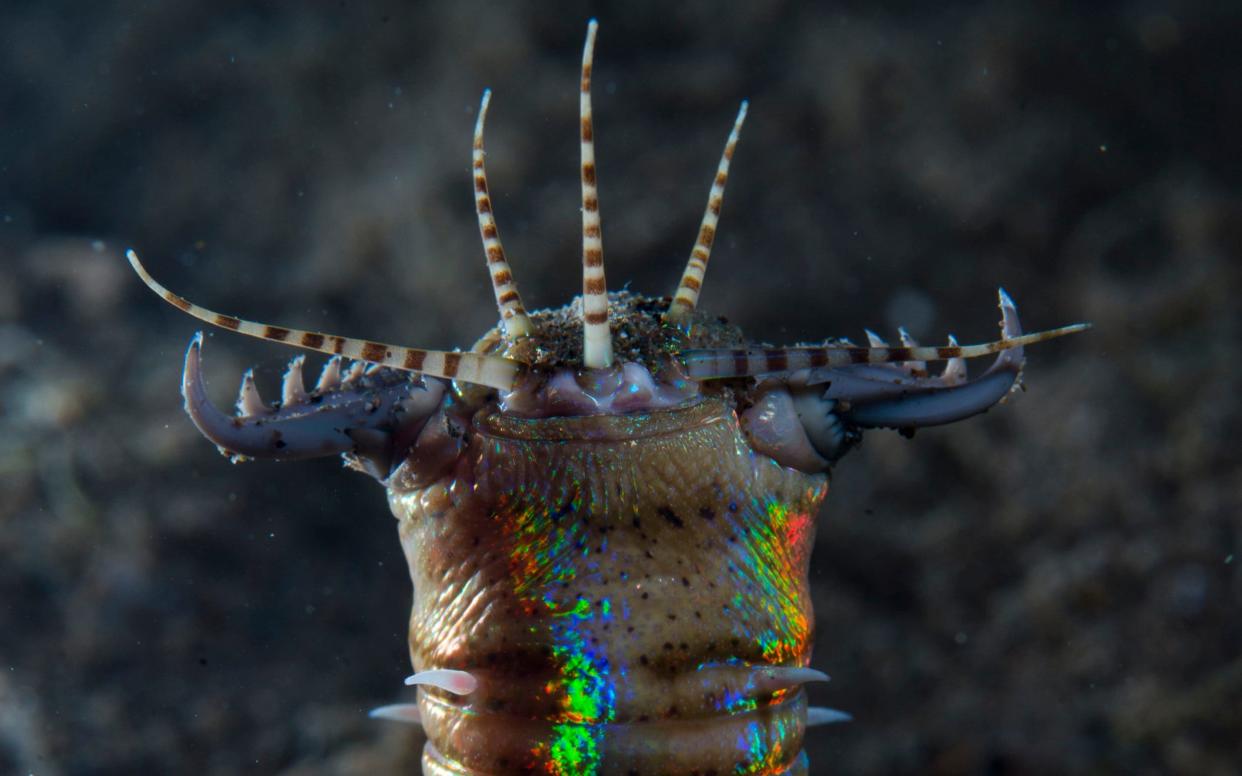Thought last week's Blue Planet II was frightening? The evil bobbit worm is worse

Last weekend's instalment of Blue Planet II proved a harrowing experience for some viewers. Gone were the loveable dolphins and cuddly walruses of the first episode. In their place, we were treated to the sight of sharks eating a rotting sperm whale carcass, the hideous fangtooth fish and "zombie worms". On Twitter, one frightened chap wrote, "I'm never going in the sea again."
But episode three introduces what may be the most disturbing subaquatic beast to grace our screens all year: Eunice aphroditois, a predator known to its friends (if it has any) as the bobbit worm.
David Attenborough, presumably due to the BBC's rigid guidelines on impartiality, does not actually call the bobbit worm evil. But his programme very, very heavily implies it.
Its on-screen murder of a helpless bream is underscored by music redolent of the Psycho shower scene. This "ambush predator" lies in wait, invisible, under the sand of the ocean floor, before emerging in a flash to devour its prey. We haven't seen this kind of knuckle-biting tension on TV since – well, since the iguanas vs snakes scene in Planet Earth II.
The monstrous bobbit, we learn, has "jaws as sharp as daggers" and can grow to be 10 feet long. Imagine a cross between the "chest-burster" in Alien and the sand-monsters in 1990 creature-feature Tremors, and you'll be halfway there. In 2009, a four-foot-long specimen was found to be killing all the fish at an aquarium in Cornwall. The worm reportedly destroyed the traps the aquarium staff left for it, and simply ate the hooks.
Blue Planet II: The spectacular BBC natural history series, in pictures
If its actions weren't grisly enough, its name has an equally unpleasant backstory: it refers to a notorious 1993 incident in which an American woman called Lorena Bobbitt cut off the penis of her husband, John. Luckily, in Sunday's episode of Blue Planet II we learn that the bream have an ingenious method of rendering the bobbit worm almost harmless.
Other highlights of the episode, which focuses on the world's coral reefs, include a turtle "beauty salon", the sight of an octopus and a coral grouper teaming up to hunt together in Australia's Great Barrier Reef, and the story of a saddleback clownfish's mission to create a safe home for his partner.
More seriously, there is also a potent reminder of how these lush reefs – which harbour around a quarter of the world's marine life – could be decimated by even a small increase in the ocean's temperature. So far, the series (which follows 2001's The Blue Planet) has met with five-star reviews from the critics; this week's episode looks unlikely to disappoint.
The third episode of Blue Planet II airs this Sunday at 8pm on BBC Two

